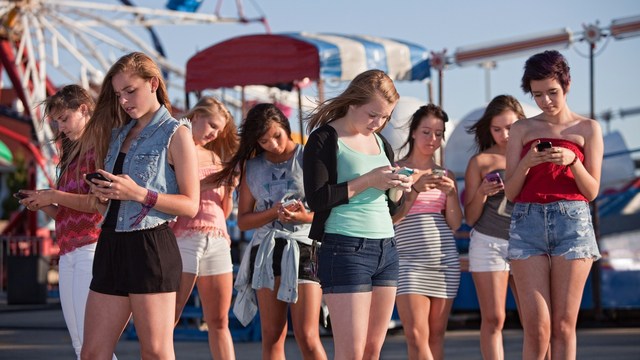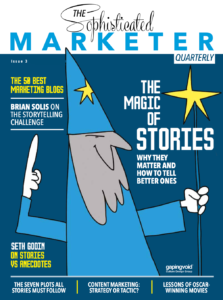Guest post by Brendan Gahan (@BrendanGahan), a YouTube marketing expert helping Fortune 500 brands with their YouTube influencer and community building campaigns. He was named Forbes 30 Under 30 in Marketing & Advertising and one of the 25 Top YouTube Business Power Players for 2013.
The past month there’s been a wealth of speculation in the blogosphere regarding livestreaming services Periscope and Meerkat.
Who is going to win?
Which platform will crush the other?
Which app is the future of livestreaming?
But… who cares?
These ongoing debates remind me of the Vine vs Instagram video conversations of two years ago; undoubtedly, in another two years, more speculation will rage on around some other new set of video services.
These debates focus on the trees, and not the forest. The real battleground is around text vs digital video.
Digital video is quickly becoming the de facto form of communication.
Since the introduction of YouTube ten years ago, digital video has been wildly disruptive, upending the traditional advertising, celebrity, and production processes. People embraced YouTube like a fish to water.
Everyone my age (I’m 32) grew up with dial up internet where the bandwidth barely supported text, let alone video. As a result our early days online, and even today, are largely centered around the written word. We eagerly connected with friends on AIM, or made crappy GeoCities sites in the late 90’s. And, now in adulthood I spend an excessive amount of time reading blogs like Gawker and Buzzfeed.
However, this text centric digital world has disappeared for younger audiences.
Teens don’t read.
A survey of High School seniors in 2014 found that they don’t read top websites (73 percent don’t read Buzzfeed, 96 percent don’t read Gawker or Mashable). They were obsessed with video, with 65 percent of the seniors participating in the survey using SnapChat and 97 percent using YouTube.
It’s no coincidence that Tumblr, Twitter, and Facebook have all added video to their platforms recently. None of them want to be irrelevant as content consumption changes with younger audiences.
But why is video so successful?
The introduction of new technology does not mean its adoption.
There’s something emotionally spectacular about video. When our brains recognize the human form, they release chemicals, such as dopamine-which is often associated with love, motivation, sexual gratification, and addiction, which drive emotional connection.
Having this level of neurological engagement in mind, anything a brand does that falls short of our expectations for a seemingly-human online interaction.
However, as a brand, how do you regularly produce stimulating content across multiple platforms and adapt to a generation whose media habits are foreign to you?
Today kids come home from school and jump on YouTube to catch up with their favorite vloggers and send Snapchats to friends. Twenty years ago, they would go home and call their friends with a rotary phone, flip through a magazine, and watch TV.
These changes pose challenges to brands who are unable to translate their message to YouTube, the oldest digital video platform of all. Few have been able to bring to life their brand in a compelling way in digital video, in fact there’s not a single brand in the top 100 most subscribed YouTube channels. And, while major advertisers and brands are still in the very early stages of adoption – they’ll have to adapt faster or risk disappearing entirely as new platforms emerge.
Throughout history, the most successful brands adopted and embraced new mediums, while those who failed disappeared.
This happened with radio, when it was popularized in the 20’s, and the brands who survived (and thrived) during this massive adoption were automobile, oil industries and consumer goods (Ford,Tidewater Oil, and Pepsodent). With the introduction of TV in the 50’s, Brands like Tidewater and Studebaker failed to adapt and died off, while Ford, Chrysler, GE and Kraft thrived as they jumped on to the platform.
In the 60’s a brand could spend months on a TV spot. The commercials were highly controlled and analyzed piece of content to ensure they represented the brand, each frame could be analyzed and thought out before ever being shown to the public. This level of control is impossible today.
It used to be YouTube was the dominant digital video platform, but just in the last three years we’ve seen an explosion of additional services such as Vine, Snapchat, Instagram video, Facebook video, Twitter video, Tumblr Video, Periscope and Meerkat.
As a result, the amount of video created has increased dramatically while brand content hasn’t scaled with consumption.
Things are going to continue to change, and that rate of change is going to speed up (Moore’s law) and video will be at the center of communication and content.
Kodak became irrelevant by failing to adopt digital cameras. The largest cab company in the world, Uber, doesn’t own a single car because of its adoption of mobile technology. Brands will be invisible if they fail to translate their message to the incoming digital video mediums.
If the last ten years are any indication, most brands had their Kodak moment years ago and are gradually trudging ahead toward irrelevancy by failing to translate their brands into the digital video mediums of the future.
Image Source: EmpowHER






An interesting point is brought up about the “real battleground” being text vs. digital video. It is quite evident that digital video mediums are becoming more apparent in our daily lives. Coming from the opinion of someone who falls under the category “digital native,” I believe all of the points made in this article are valid because I see these exact findings in my peers. It is even made obvious in the classroom where a majority of professors are trying to use some form of digital video medium in order to communicate with students more effectively.